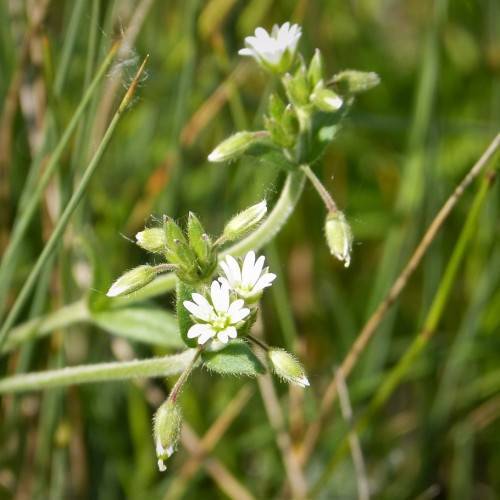
Common Mouse-Ear Chickweed
Cerastium fontanum
Watering:
Minimal
Hardiness Zone:
Sun:
full sun,part shade
Leaf:
Yes
Growth Rate:
Low
Drought Tolerant:
Yes
Invasive:
Yes
watering
For Common Mouse-Ear Chickweed, water once or twice per week to make sure the soil remains moist, but not soggy. Water in the morning so the soil has time to dry out during the day. In very hot weather, water more frequently to keep the soil from drying out too much. Avoid getting water on the leaves, as this can cause fungal diseases. In cooler weather, water less often. Check the soil before watering, and if it still feels moist, wait another day or 2 to water.
sunlight
Common Mouse-Ear Chickweed (Cerastium fontanum) grows best in full sun with 6-7 hours of direct sunlight a day at most. But this plant can also tolerate partial shade. It prefers cool temperatures and can handle temperatures as low as 10-15 degrees Fahrenheit, but it avoids cold temperatures below 0 degrees Fahrenheit for extended periods of time. When growing in full sun, water when the soil is dry to the touch to ensure that the plant does not suffer from drought stress. Give it enough water to keep the soil slightly moist but not saturated.
pruning
Common Mouse-Ear Chickweed (Cerastium fontanum) is a hardy plant type that can tolerate a variety of pruning. The best time to prune is early to mid summer when the plant is actively growing and blooming. If pruning is done later in the season, it can encourage a second bloom. To maintain a neat appearance, it may be necessary to prune periodically throughout the season. Generally, only a light pruning is recommended with most of the plant being left intact. To prune, cut back the stems of the plant to the desired level with pruning shears. Be sure to wear protective gloves and eye wear during the pruning process. When pruning, remove any dead and/or discolored leaves and stems. Doing so will help to ensure the health of the plant.
